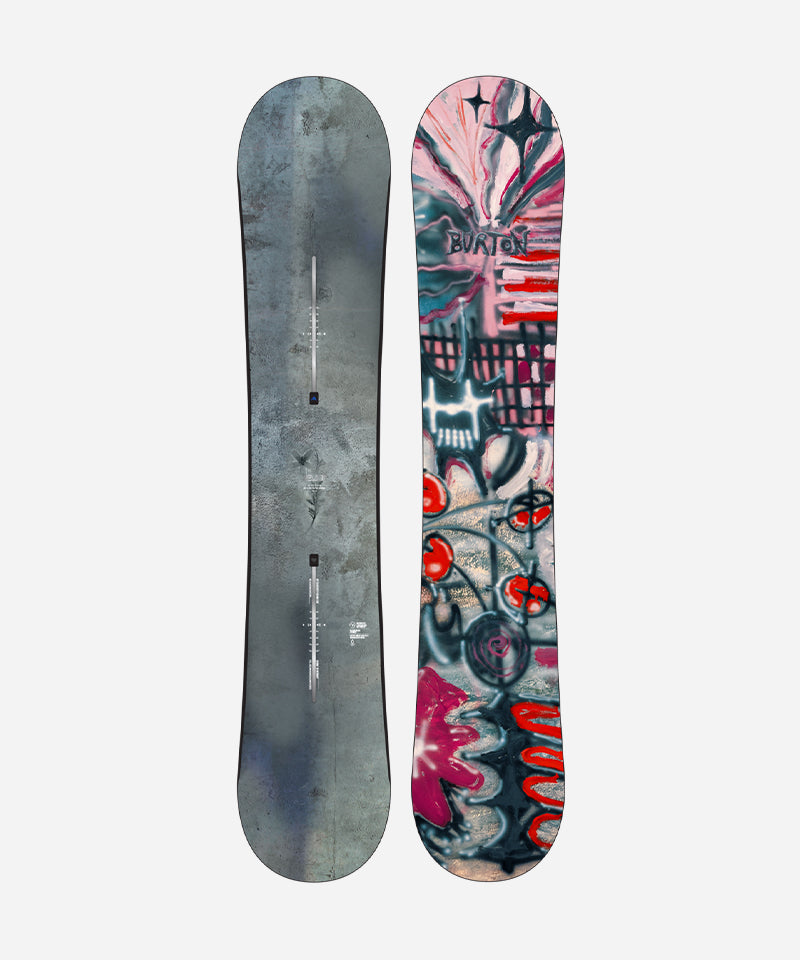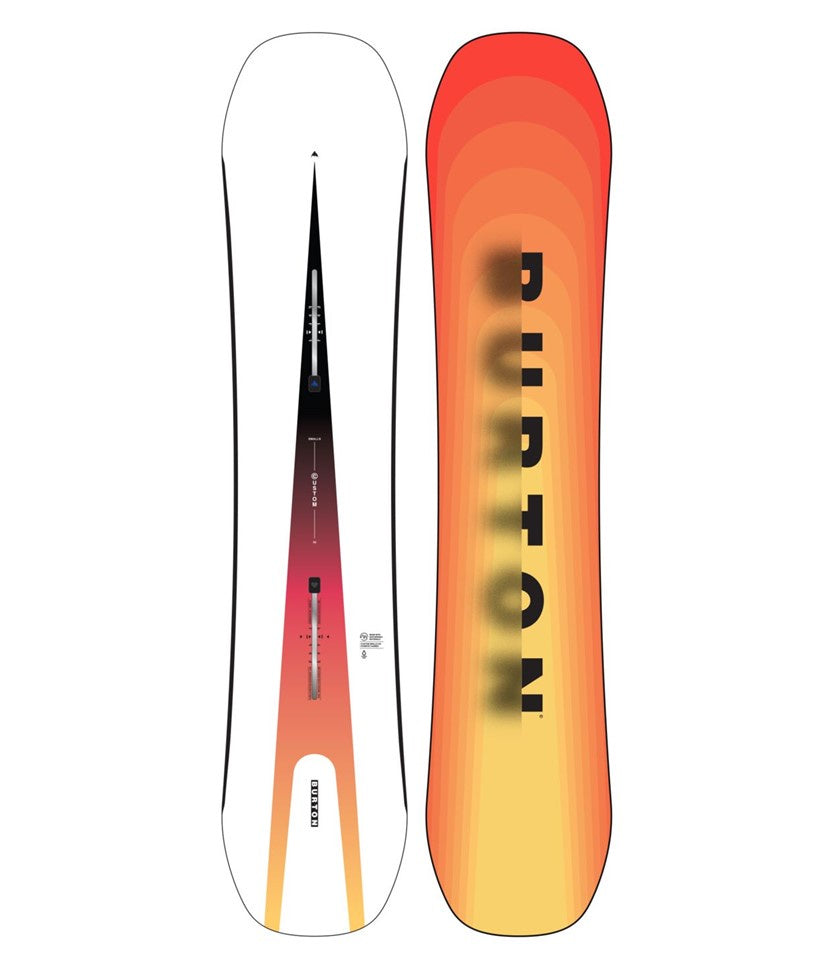Snowboard Buyer's Guide
What snowboard should I buy?
By Ethan – 5 minute read
So you’re looking for a new snowboard but need help figuring out which one is right for you. That’s okay! Snowboards are complex creatures, which can get confusing with so many on the market. In this guide, I’ll break down the questions you should ask yourself when buying a snowboard and what to look for once you have those answers.
How confident am I on a snowboard?
Finding a board that matches your level of confidence is essential. An advanced board will only harm your progression if you’re learning to connect your turns and can’t confidently reach high speeds yet. Conversely, if you are getting confident on a snowboard, you will outgrow a cheap “beginner” board in no time. So what should you be looking for? The simple answer is the board’s flex and profile.
Flex
Different materials contribute to a board’s flex or stiffness. Most snowboards are often rated from 1 (the softest) to 10 (the stiffest), making it easy to understand if it’s right for you.
Soft boards are more forgiving, easier to turn and generally more beginner friendly. If you are still learning to connect your turns and build up some speed, a board on the softer side will help you progress your skills. A stiff board will be far less forgiving and harder to turn without correct technique.
However, if you can confidently turn a board, build up some speed and want to increase your riding aggression, a stiffer board will allow you to do that. Rigid boards are more stable at high speed and can allow you to generate more power through your turns.
Profile
Snowboard profile refers to the shape or bend of the board. The three main profiles to concern yourself with are flat, rocker and camber.
Flat boards are, well, flat. The entirety of the board’s edge touches the snow at all times, making flat boards highly predictable, easy to ride and progress on. Flat boards are great for beginner-level riders.
Cambered snowboards are bent like a banana, so the underfoot section of the board only touches the snow when you apply pressure to it. This lets you control your vertical movement and bounce off the board like a trampoline. As you enter a turn, you push down on the board, creating tension. As you exit a turn, you release the pressure, allowing you to explode out of turns. Camber is suited to more confident riders who can handle aggressive riding.
Rockered boards are the opposite of cambered boards. The middle section contacts the snow, whilst the tip and tail arc away from the centre. These boards are great for deeper snow as they help to funnel snow away from the tip, giving you more float in the deep stuff.
Hybrid boards sit in the middle, lending you the forgiving benefits of a flat board while allowing you to experiment with small camber and rocker sections.
There are various other types of snowboard profiles, each with their own unique characteristics, but these are the most fundamental.
What terrain do I enjoy riding?
Do you enjoy riding the piste? The park? The off-piste? The trees? Deep fresh pow? If you spend most of your time riding a specific part of the mountain, you should buy a snowboard that performs best in that condition. Several factors contribute to a board’s preferred terrain; most snowboard descriptions will cover this. Even if you buy a terrain-specific board, it will still work great in other mountain areas. However, its full potential will be unleashed where you enjoy riding most.
Like riding the entire mountain? Get yourself an all-mountain board. These boards are designed to handle most types of terrain, so you can explore the whole mountain. However, they won’t perform as well as terrain-specific snowboards.
What do you enjoy doing on your snowboard?
Every board has its own personality. Snowboards are like living things; they all have different feelings and attitudes on the hill. Think back to your last trip to the snow. Did you enjoy going super fast or slow? Did you enjoy doing big arcing turns or smaller aggressive turns? Were you fed up with burning legs, or could you ride all day? Are you riding around with the kids or your mates? Are the kids outpacing you?
These factors are essential in finding a snowboard that matches your personality. Note down what defines your snowboarding personality, then give us a call, come in-store, or cruise around our website. We’ll be able to find a board that you’ll love.
For example, I love ripping long arcing turns down the groomers, jumping off side hits and getting a good leg workout. Therefore I use a stiff, cambered board built for the groomers to give me stability and power.
If you still need to get ready to chat, I recommend watching some snowboard videos. Here’s a good one. You’ll be able to see how the boards ride and relate to their personality. If you see a video and think, “Wow, that looks like so much fun. I want to do that”, you might’ve just found your perfect board.
Closing Remarks
There are a few basic rules to follow when selecting a snowboard. Follow these rules to avoid ending up with a board that doesn’t suit you.
- Please don’t pick a board based on how it looks. Yes, we all want a pretty board, but you’ll have a bad time if you choose one purely based on aesthetics.
- Don’t pick a snowboard based on the brand. Just because you’ve heard of the brand before doesn’t mean it’s right for you.
- Think about the future. You don’t want to buy a board you will soon outgrow. Buying a board slightly outside your current comfort level will pay off soon when you progress your skills.
- Don’t set yourself a rock-solid budget. Consider all the options and features before you consider price, otherwise you might not get enough bang for your buck.
- Buy boots first. If you don’t own your own snowboard boots, stop reading now. Your boots connect you to your board; if they don’t fit correctly, your feet will hurt, and your holiday will be ruined. Boots are the most critical piece of equipment.



